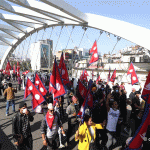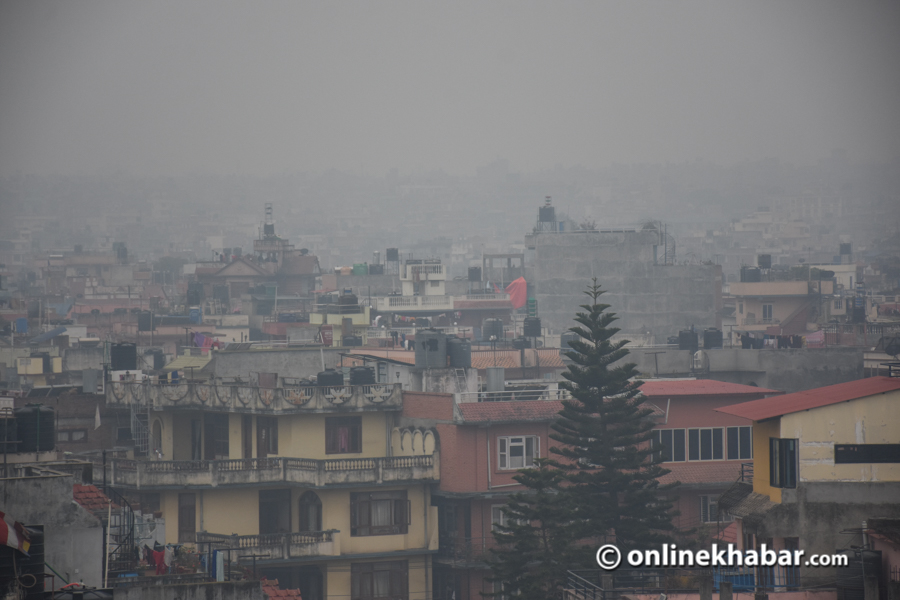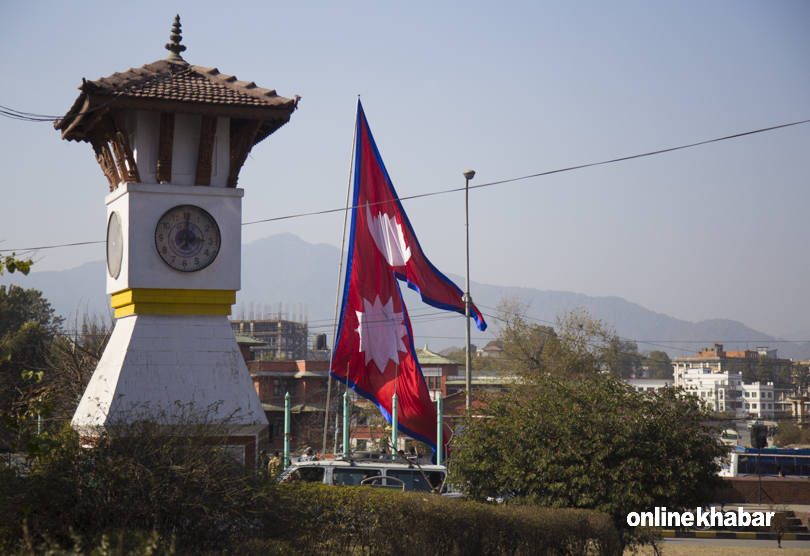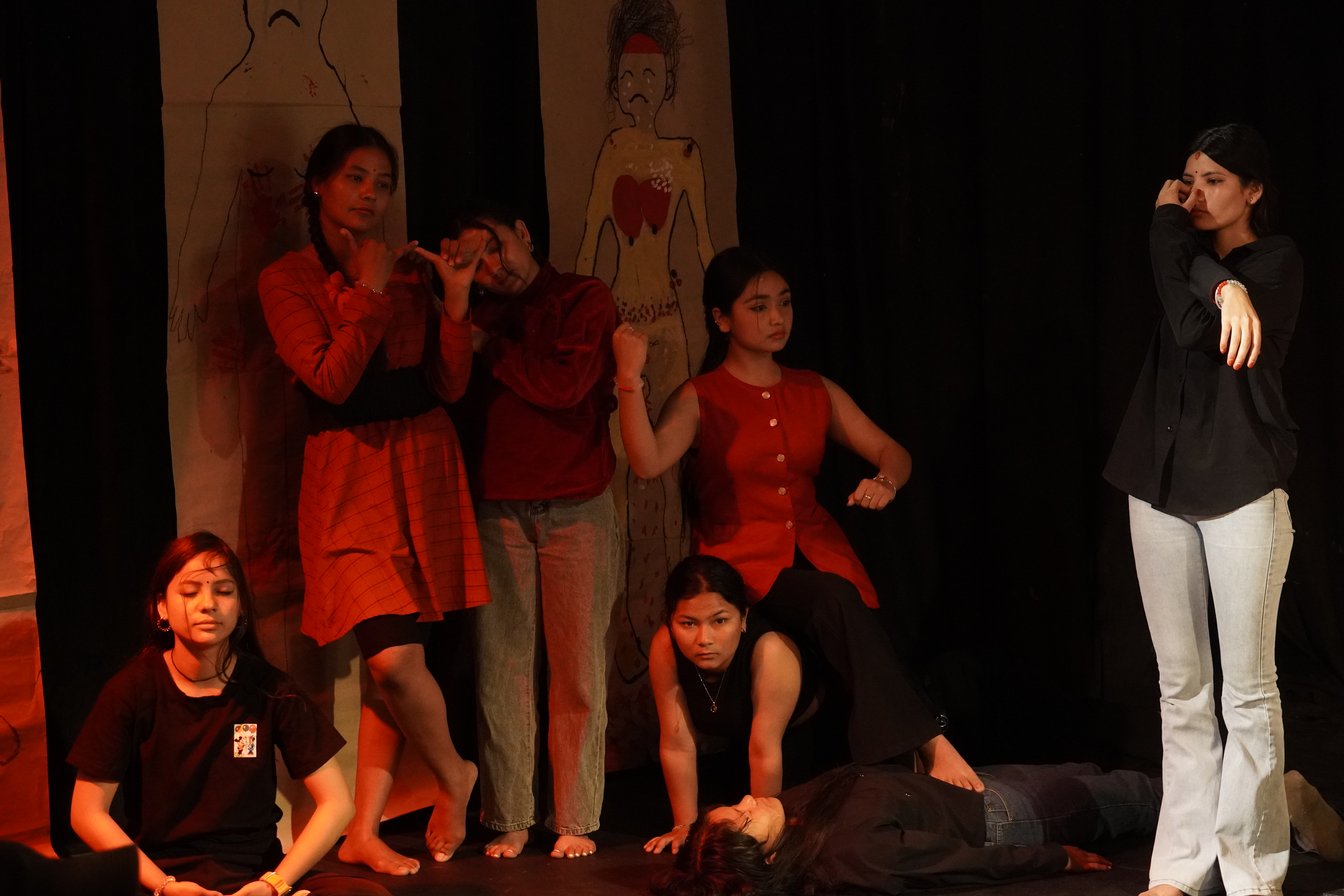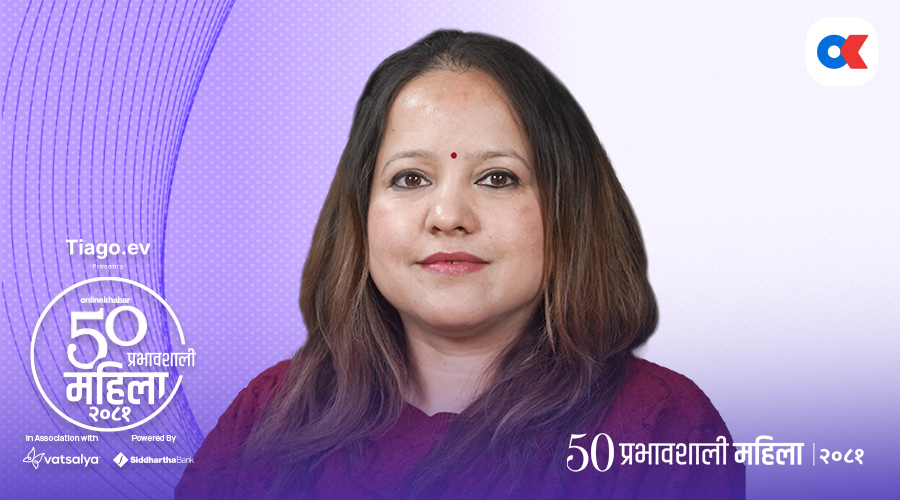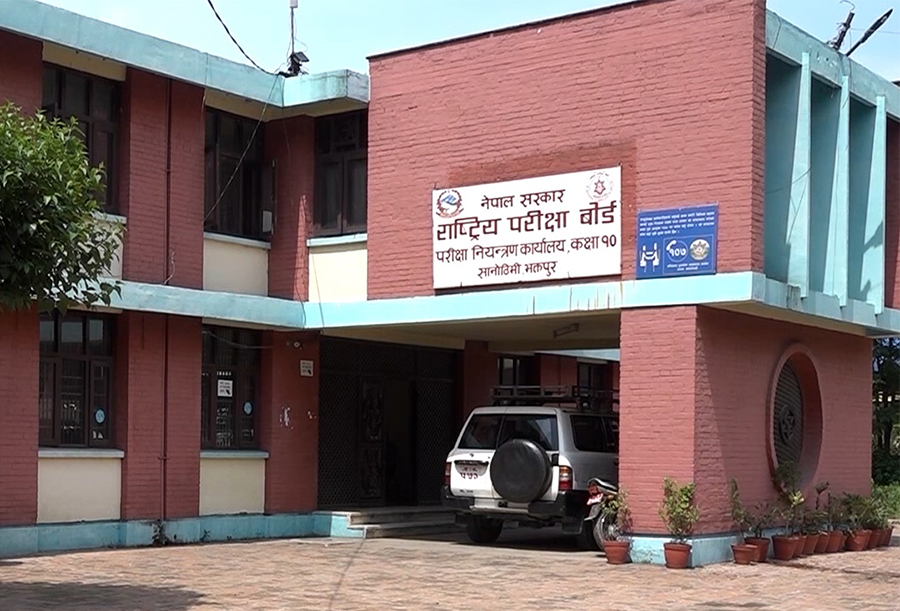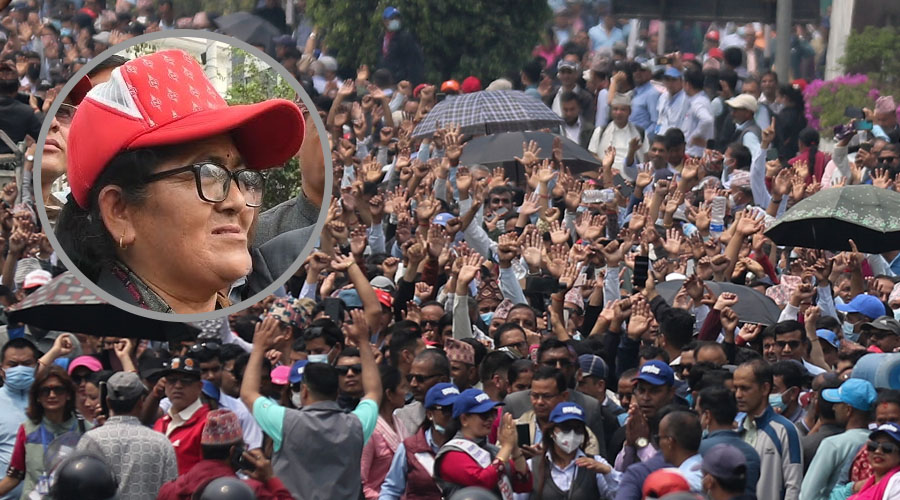
Kathmandu, January 23
An exhibition titled Feminist Futures: Art, Activism, and South Asian Womanhood will begin on Saturday, January 25, at Taragaun Next, Kathmandu.
The exhibition interrogates feminist art from South Asia, addressing patriarchy, colonialism, and socio-religious structures. It highlights women artists’ resilience and creative agency in reclaiming narratives and advancing feminist activism. The exhibition serves as a call for solidarity, justice, and a radical reimagining of gendered power structures in the region.
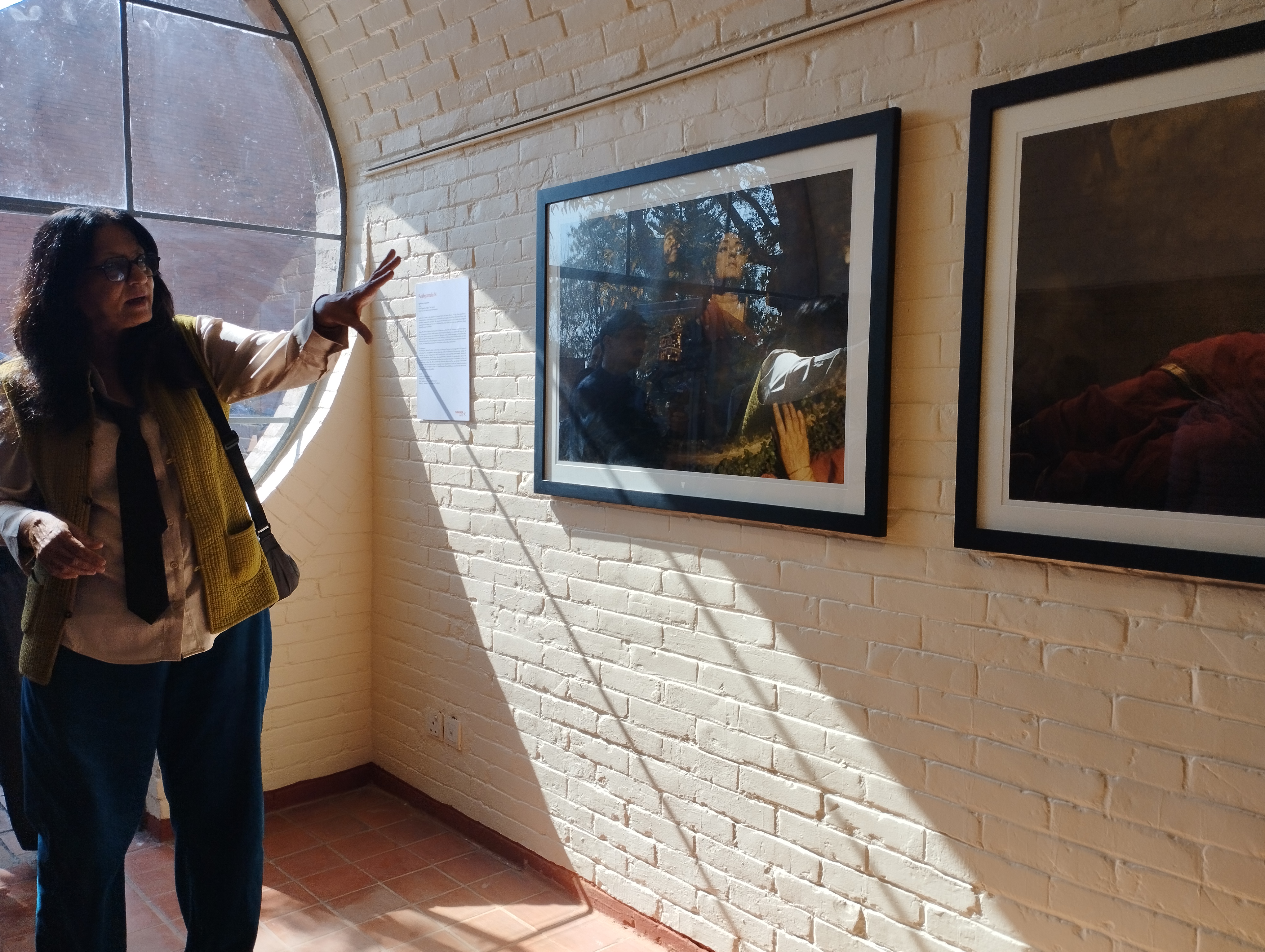
The exhibition will feature the works of 10 women artists from five countries, including Nepal, India, Sri Lanka, Pakistan, and Bangladesh. The featured artists are Anita Dube (India), Anoli Perera (Sri Lanka), Ashmina Ranjit (Nepal), Bidhata KC (Nepal), Mithu Sen (India), Naiza Khan (Pakistan), Pushpamala N (India), Sheba Chhachhi (India), Tayeba Begum Lipi (Bangladesh), and Uma Bista (Nepal).
“This exhibition highlights the resilience and strength of South Asian women artists as they navigate and challenge deeply entrenched hegemonic societal frameworks,” said Ashriya Lokhandwala, curator of the exhibition.
Regarding the decision to organise the exhibition in Nepal, Lokhandwala explained that Nepal’s historical neutrality made it an ideal venue.
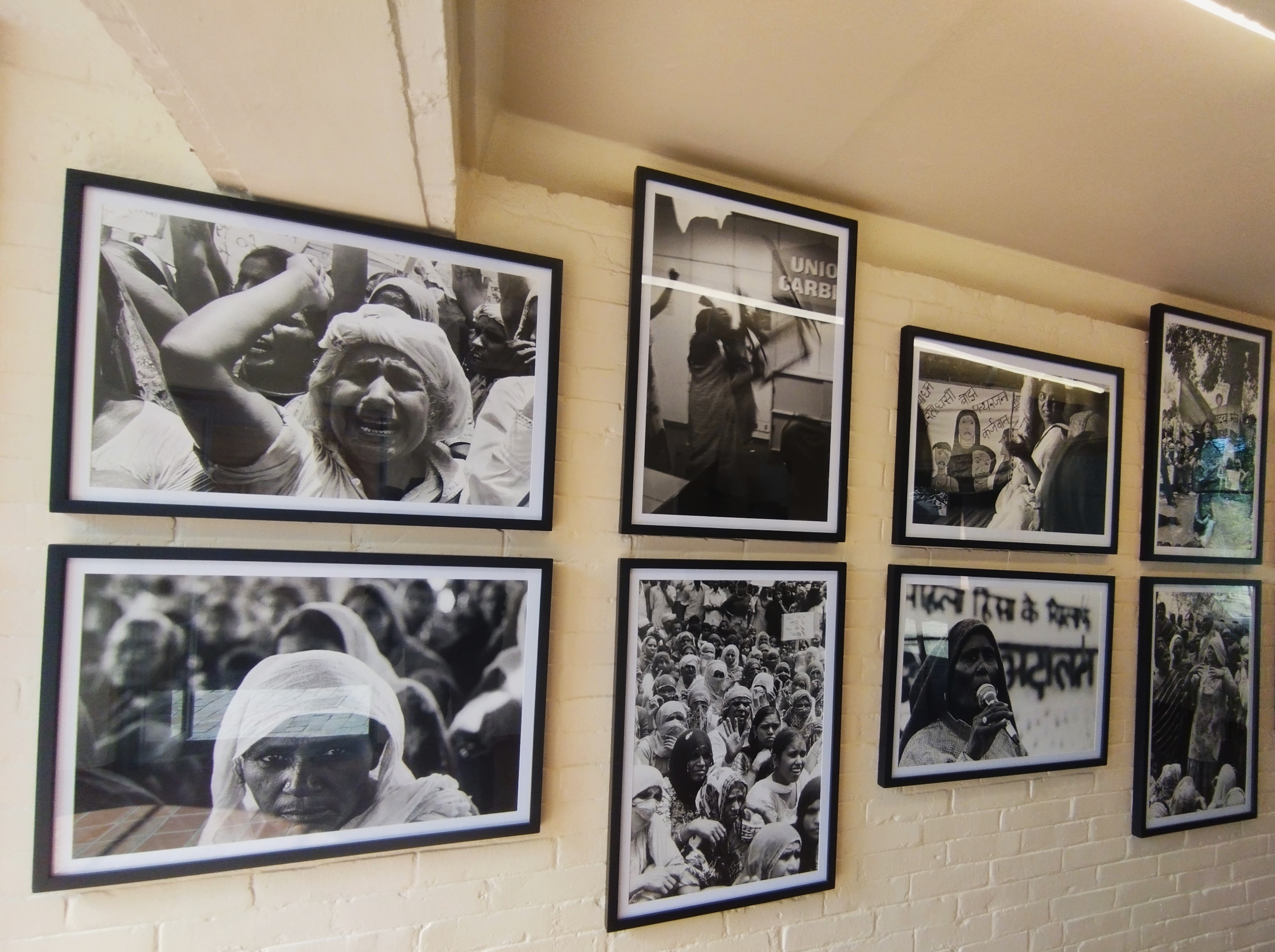
“The vibrant art scene of Nepal and the frequent discourse on feminism here are additional reasons for hosting the exhibition in Nepal,” she added.
The exhibition spans a range of genres, including sculpture, photography, installation, video, and performance.
The works of Pushpamala N and Ashmina Ranjit delve into the enduring impact of mythology and tradition on women’s lives. Pushpamala’s work Apaharan/Abduction reimagines Sita’s abduction from the Ramayana, drawing parallels to the violence and treatment of women in contemporary society.
Ashmina Ranjit’s performance Sita! The Ideal Wife? critiques the Hindu tradition of Kanyadan—the practice of giving away the bride—codified in the Manu Smriti.
Tayeba Begum Lipi’s multimedia piece, I Wed Myself, opposes the performative rituals of marriage and their inherent dualities.
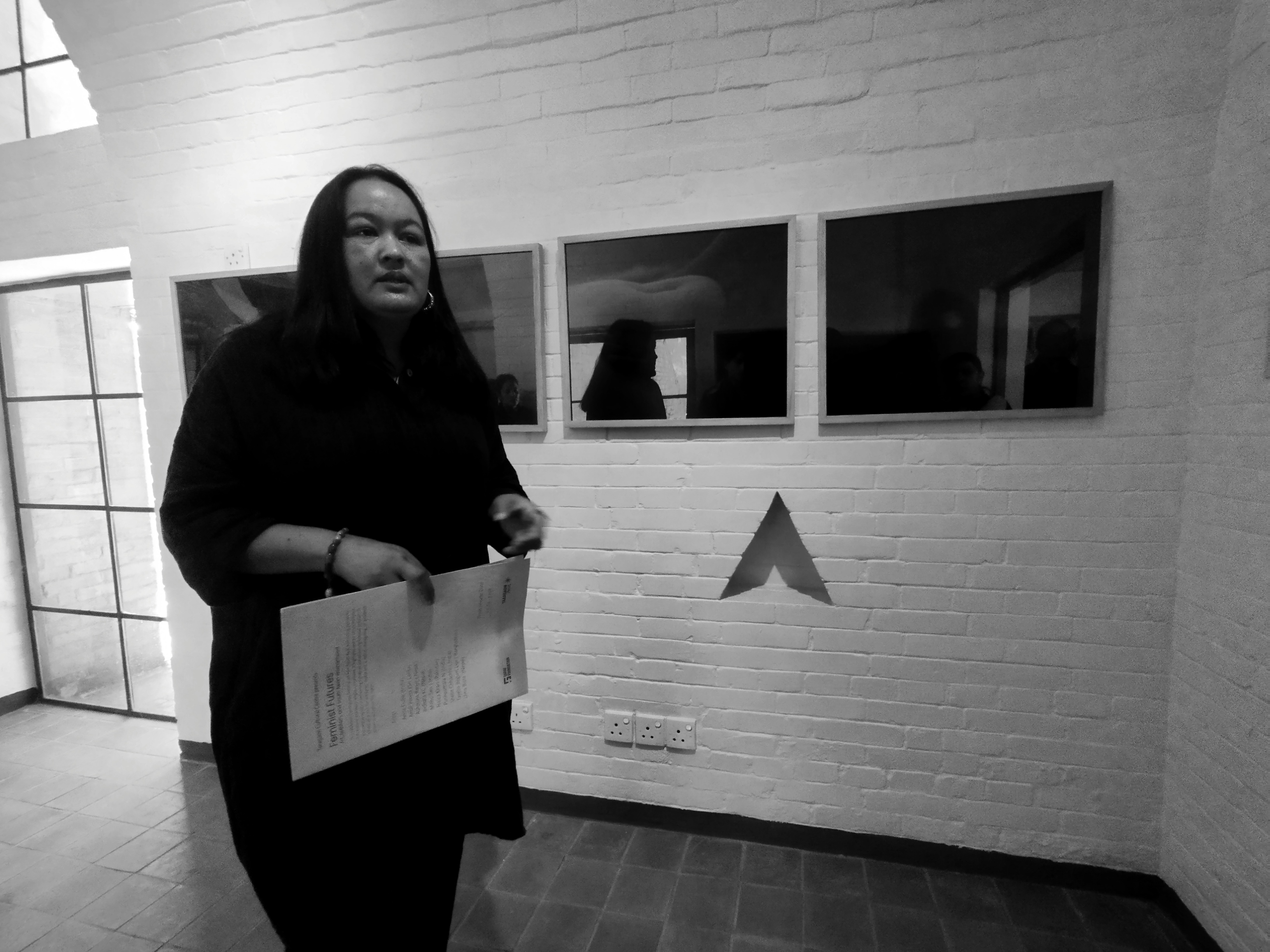
Uma Bista amplifies the voices of Nepali women through her ongoing series Stay Home, Sisters, which critiques menstrual taboos such as chhaupadi. In her work Devotion, she examines the veneration of the virgin goddess, while I celebrates women who defy societal expectations, showcasing their sacrifices and triumphs in creating spaces of resilience and strength.
Bidhata KC’s work interrogates the intersection of gender, ritual, and societal expectations in Nepal. Her piece, My Left is Right, critiques the stigmatization of the left hand in Hindu culture, challenging the validity of rituals performed by women or with the left hand.
The works of Anita Dube, Naiza Khan, and Anoli Perera explore the female body as a political and empowering site. Sheba Chhachhi’s practice embodies feminist intervention within urban spaces. Her photographic series From the Barricades reflects her activism within India’s women’s movement during the 1980s and 1990s.
Lastly, Mithu Sen’s installation Who Will Write a History of Tears? reframes tears and scars as gestures of resilience, breaking hierarchical gender silences and meditating on embodied emotion as a site of resistance.
Feminist Futures: Art, Activism, and South Asian Womanhood will run through the last week of March.





